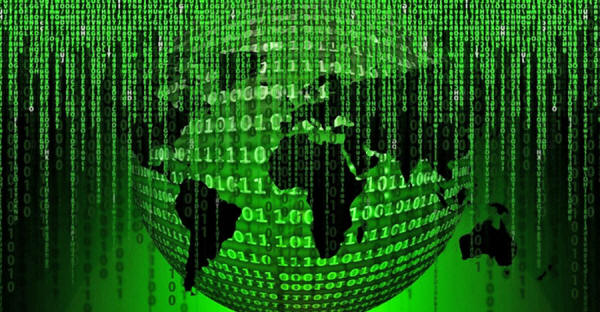|
July 12, 2017
from
TheAntimedia Website
Local natives call it the "Puerta de hayu Marca," the gateway to the lands of the gods and immortal life. Throughout their history, the natives have described people disappearing and appearing at this doorway.
In 1998, purported extraterrestrial contactee Jerry Wills claimed a tall blonde humanoid named Zo taught him how to access Aramu Muru and enter "another universe."
Jerry Wills further claimed that Zo illustrated to him how our universe is an experimental simulation within his species' universe. They built it to understand their own reality, which is itself nested inside a larger universe.
The next year, in 1999, the blockbuster science fiction film The Matrix came out and forever emblazoned into our collective subconscious the idea that our existence is a simulation created by a more advanced race of beings.
Incidentally, the film also made long black trench coats, black sunglasses, and my last name all the rage, but I digress…
A few years after the release of The Matrix, philosopher Nick Bostrom published the Simulation Argument, a concise paper entitled "Are You Living in a Computer Simulation?"
It presented a trilemma, a mathematical breakdown of why at least one of three provocative scenarios must be true.
The "posthuman civilization" to which Bostrom refers defines a period of time after which humans have merged with technology.
This is sometimes referred to as post-Singularity, with the 'Singularity' describing futurist Ray Kurzweil's designation of a society in which humans are post-biological, living synergistically with artificial intelligence.
The Simulation Argument presupposes the development of this posthuman civilization, at which point, Bostrom states, advanced humans or AI (Artificial Intelligence) might develop simulations of the past in the same way that current scientists create test environments; some of the simulations would likely be for entertainment reasons, as well, in the same way humans currently create video games and movies.
In recent years, a number of high-profile figures have come out to state their belief that we are living in a simulation.
Chief among them is tech magnate Elon Musk, who has stated that the video game No Man's Sky confirmed his belief that someday simulations would approximate reality so comprehensively that they would be indistinguishable from reality.
Apparently, he was sitting in a hot tub with friends when he finally converted.
Musk is the CEO and brains behind,
In recent years, he has expressed bold plans for his companies that he believes will advance the human race:
When he was asked about whether humans are living inside a computer simulation, Musk made headlines last year by saying he thinks the chances are one in billions that we aren't.
Here Musk is referring to the exponential growth of technology, the lynchpin of the Singularity theory.
If in 40 years we've gone from the two-dimensional pong to the cusp of augmented and virtual reality, imagine where we'll be in another forty, or a hundred, or 400.
Provided the human race survives, one may assume we will achieve the ability to produce simulations with sentient beings.
Already, the Department of Defense has created the Sentient World Simulation, a real-time,
In recent years, other scientists have conducted research and even experimentation in attempts to show actual evidence of the Simulation.
Heads turned last year when theoretical physicist S. James Gate announced he had found strange computer code in his String Theory research.
Bound inside the equations we use to describe our universe, he says, is peculiar self-dual linear binary error-correcting block code.
A team of German physicists has also set out to show that the numerical constraints we see in our universe are consistent with the kinds of limitations we would see in a simulated universe.
These physicists have invoked a non-perturbative approach known as lattice quantum chromodynamics to try to discover whether there is an underlying grid to the space/time continuum.
So far their efforts have recreated a minuscule region of the known universe, a sliver of a corner that is but a few femtometers across.
But this corner simulates the hypothetical lattice of the universal grid, and their search for a corresponding physical restraint turned up a theoretical upper limit on high-energy particles known as the Greisen-Zatsepin-Kuzmin, or GZK cut off. In other words, there are aspects of our universe that look and behave as a simulation might.
With news that there are two anonymous tech billionaires working on a secret project to break us out of the Matrix, it's hard to know whether we should laugh or scream in horror.
Simulation talk is great epistemological fun and metaphysical amusement of the highest order, but it may speak to an underlying anxiety regarding the merging of our reality with machines, or an underlying existential loneliness. It's even been posited as a solution to the Fermi Paradox.
Why haven't we met aliens? Well, because we live inside a world they built.
Our earth is marooned in a cosmic void so vast it would take our current Deep Space I propulsion system an astonishing 81,000 years to reach the nearest star - in a galaxy of hundreds of billions, which is, itself, just one of hundreds of billions.
The thought that it's all 1s and 0s rendered by a futuristic microprocessor is philosophically sexy but, perhaps, sociologically lazy.
That there is anxiety about reality being manufactured in a society obsessed with simulated pleasure and mediated experience isn't altogether surprising.
It's the ultimate, though perhaps accidental, expression of resistance to a culture steeped in consumerism and artificial growth.
|


